Appearance of Fila Brasileiro
The fila brasileiro is a breed of dog in the molosser family, but differs from its relatives in many ways. It bears molossoid and bloodhound characteristics, but I would like to point out that it does not resemble any of the molossoid breeds and does not resemble the bloodhound. It is somewhere in the middle, like a "hunting-molosser" or "catching" dog. Unfortunately, the FCI does not have such a classification, although it would be preferable for a better understanding of the breed.
The conformation is rectangular, massive, strong, harmonious, not heavy and free of any exaggerations. Males 65-75 cm (CAFIB standard 65-70 cm) and weighing at least 50 kg, bitches 60-70 cm (CAFIB standard 60-65 cm) and weighing at least 40 kg (CAFIB standard uses the word "at least" instead of "approximately" in both cases). No upper limit is set, thus allowing for filas weighing up to 70-90 kg. An ideal body weight male fila is around 55 kg and an ideal body weight female fila is around 48 kg. This is a broad generalisation, but I would like to point out that too much weight should no longer fit into the ideal fila type, as this would be at the expense of functionality. They will be heavy and sluggish, which is a trait that is not breed specific.
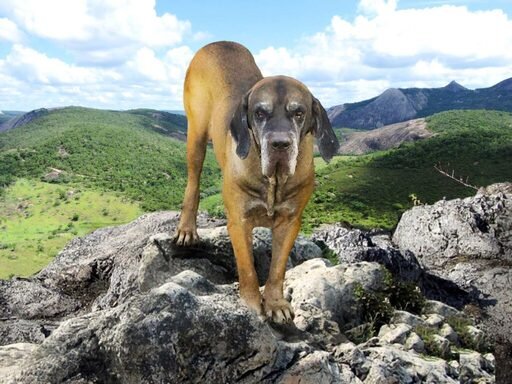
Some people sometimes confuse it with the Tosa, because there are some characteristics that can be overlapping in the two breeds, such as the colour, the more athletic build compared to the Molossians, the leathery head. The truth is that the two breeds are very different, the Fila typically has a pear-shaped head with lower ear pinning which when observed is at a similar height to the Tosa and a more relaxed build, while the Tosa has an angular head, higher pinned ears and a firmer build, its facial expression is far from that of the Fila.
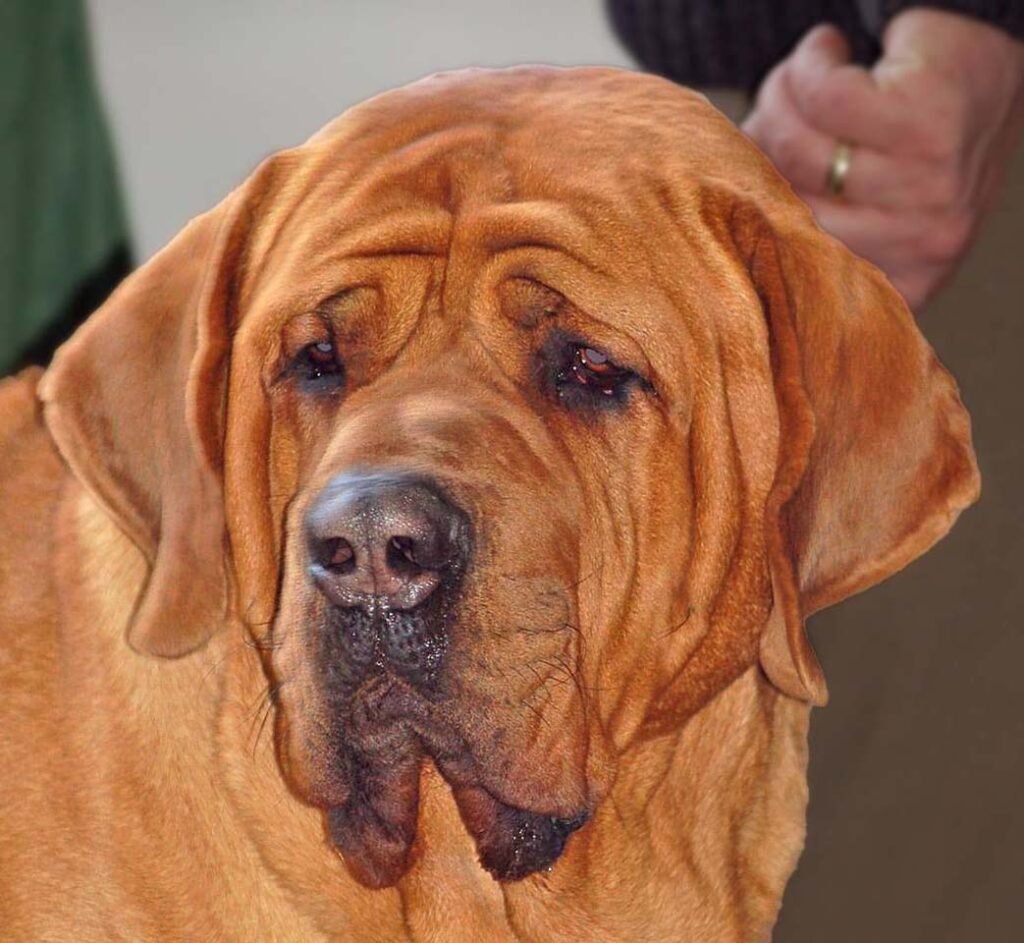
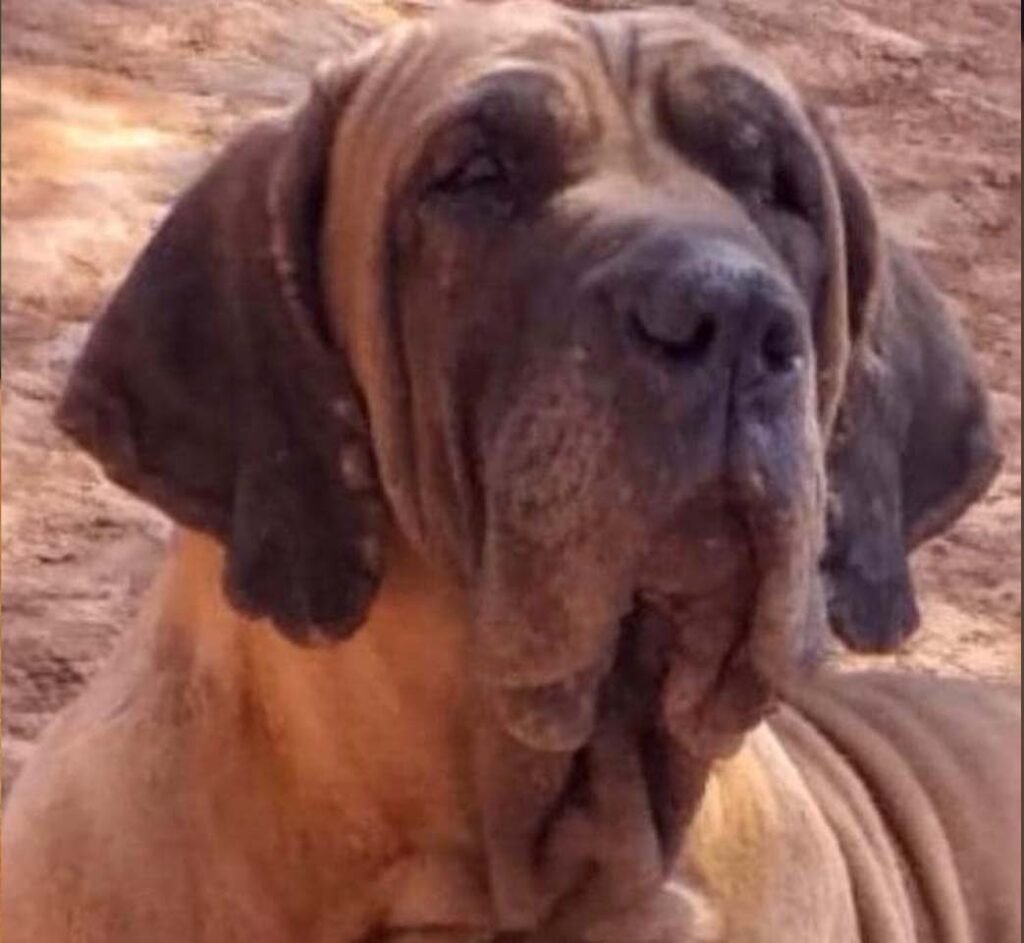
When looking at the fila, the first thing you notice is that the hind is higher than the marten, which is why it has a characteristic gait, the walk or camel walk. This means that it moves its legs on the same side at the same time, and then its legs on the opposite side, giving the species a sideways rocking motion. Trot is wide, dynamic, light, soft, loose. Gallop is very fast for its size, , agile and not cumbersome.
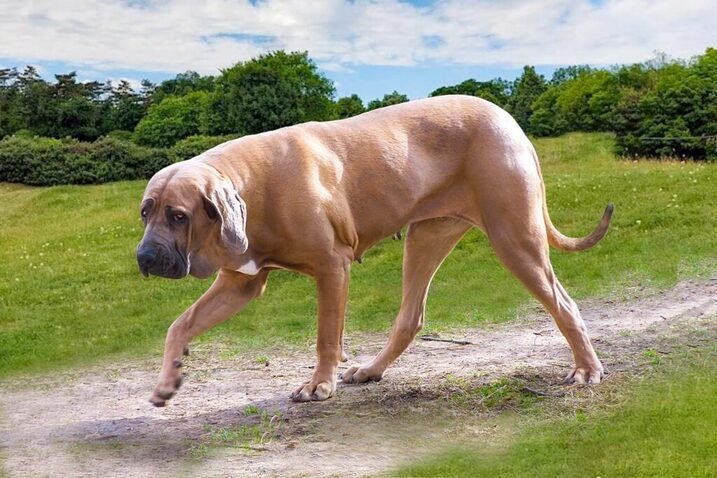
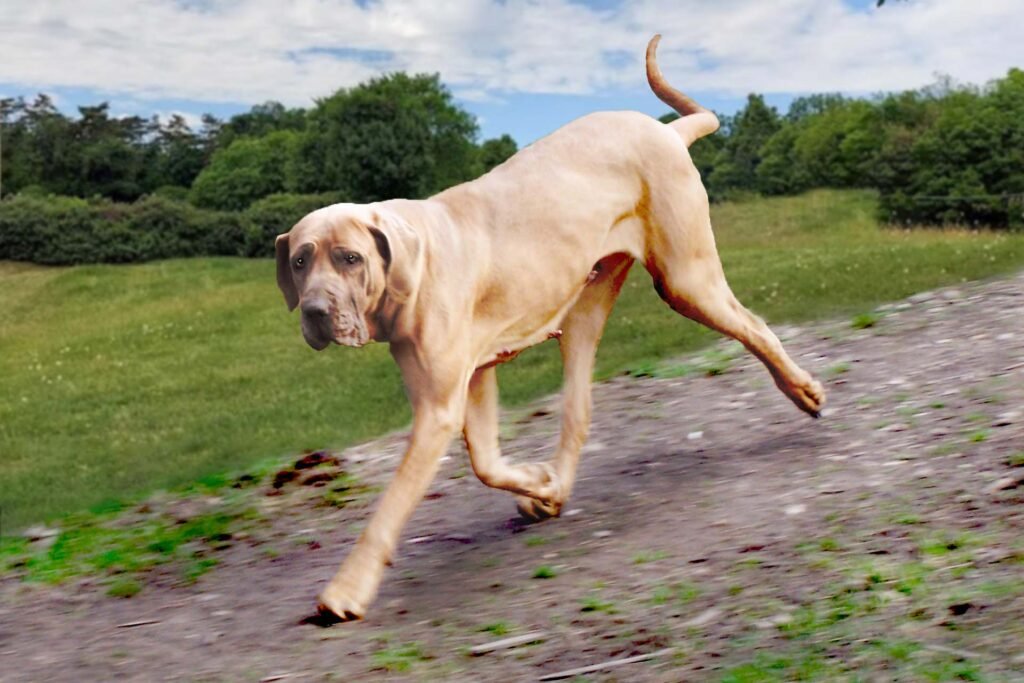
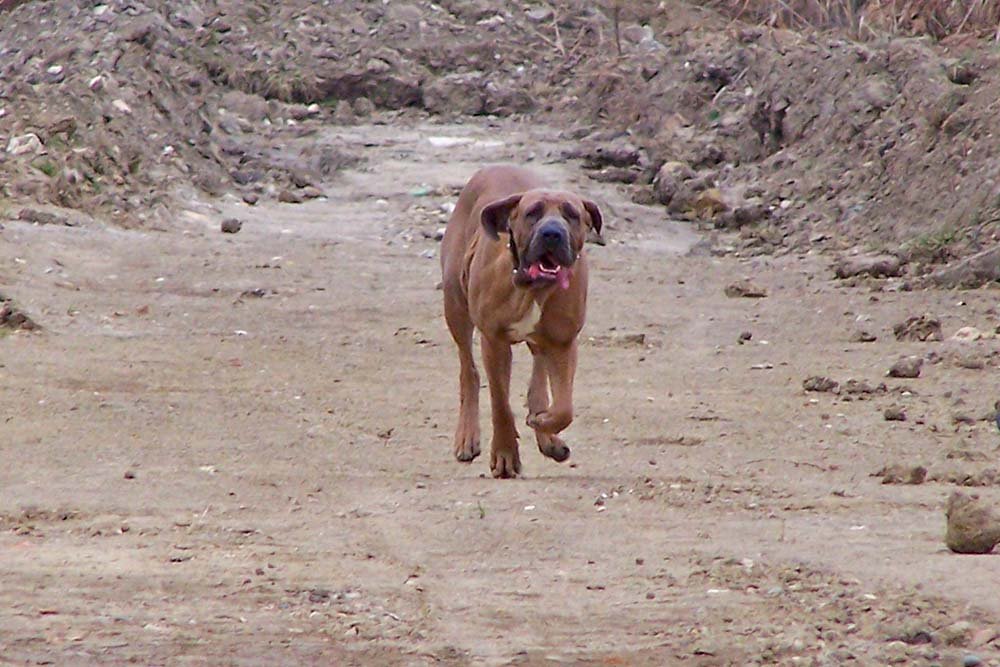
Its body is covered with loose skin, which can cause wrinkles on the withers, shoulders and the eyes on both sides vertically downwards. Characteristic double dewlaps at the throat. In bitches, moderate amounts of dewlaps may be present in some individuals, running symmetrically along the lower line on both sides.
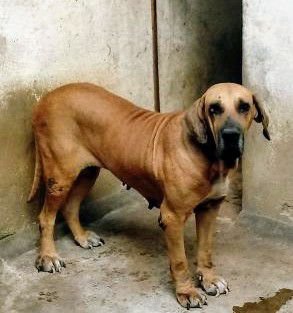
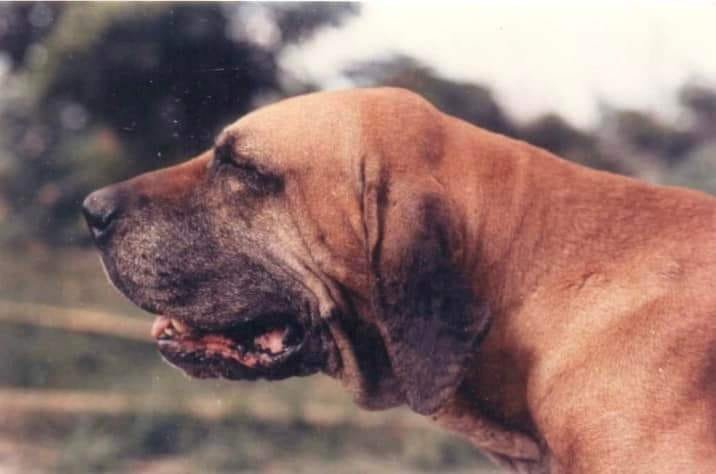
The head is more like a pear, with no angles but rather curves. The ratio of the brain skull to the cheek skull is 1:1, which is not typical of other molosser varieties. Here there is a difference between the FCI and CAFIB standards, because the FCI standard specifies that the muzzle may be shorter. It has no stop and is formed by the developed brow arches when viewed from the side. Facial expression is melancholic at rest, mainly because of the lower logo-eyelid due to loose skin. Ears in this condition, drooping to two sides at the eye line. This distinctive expression is very deceptive to a stranger observer who is not at all familiar with the breed, because it does not look like a look of distaste for strangers. At this first encounter, the observer should be warned to be cautious. The fila's teeth are scissor-shaped, some individuals having exceptionally sharp canines. When watching, the ears are pinned higher. The overall expression of the face should be clear, without any appearance of confusion, and free from unnecessary skin density and other breed-like features. Excessively logose lower eyelids and too much skin are undesirable, although the standard does not address this except to say that anything that deviates from the description is considered a fault.
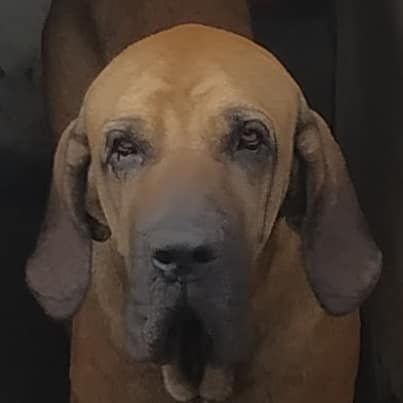
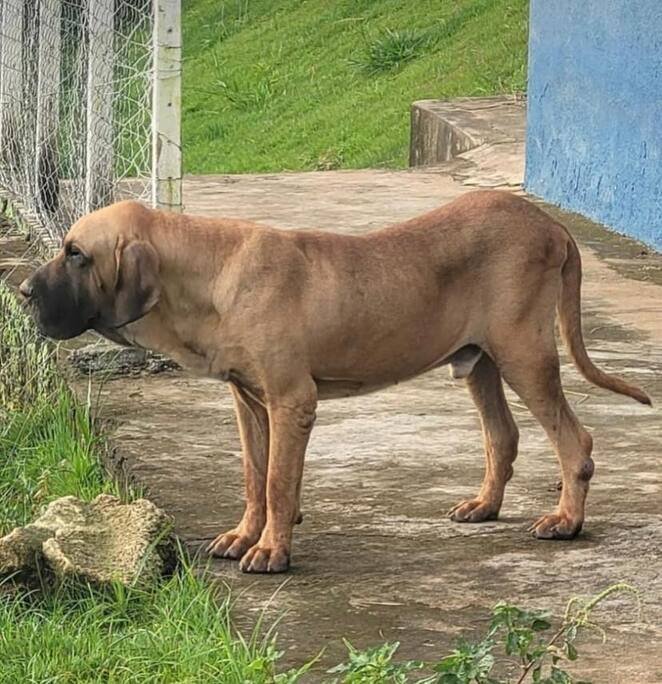
All in all, looking at the Fila, it should be a dog that is fully capable of its function, capable of hiking several kilometres, with a well-proportioned build, free of any exaggerations, and able to cope with a farm environment. A young Fila can even jump over a 160 cm fence.
The colour can be any shade of yellow, with or without stripes, black mask and ears. The FCI standard allows black, but the CAFIB standard does not. The FCI is stricter with white patches, allowing them on the paws, on the muzzle and at the end of the tail. They are not desirable in other places. White markings covering more than a quarter of the body are penalised. The CAFIB is more permissive, white markings may be on the legs, chest and tail, and less frequently on the neck and muzzle, all the way to the head.
Many thanks to Marcus Flávio Moreira and Guilherme Trindade Reis for the photos and Vera Katharina for the video.
